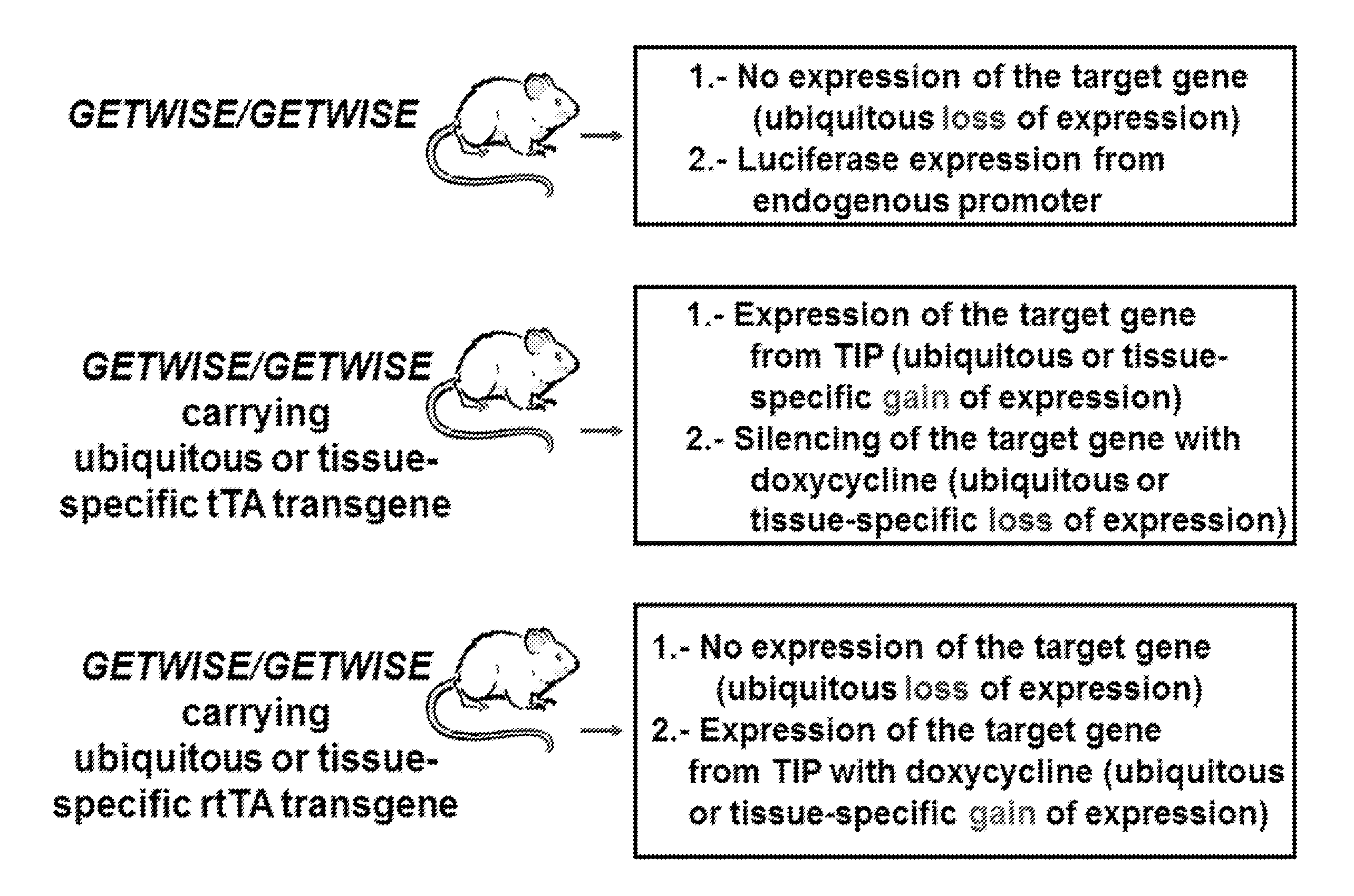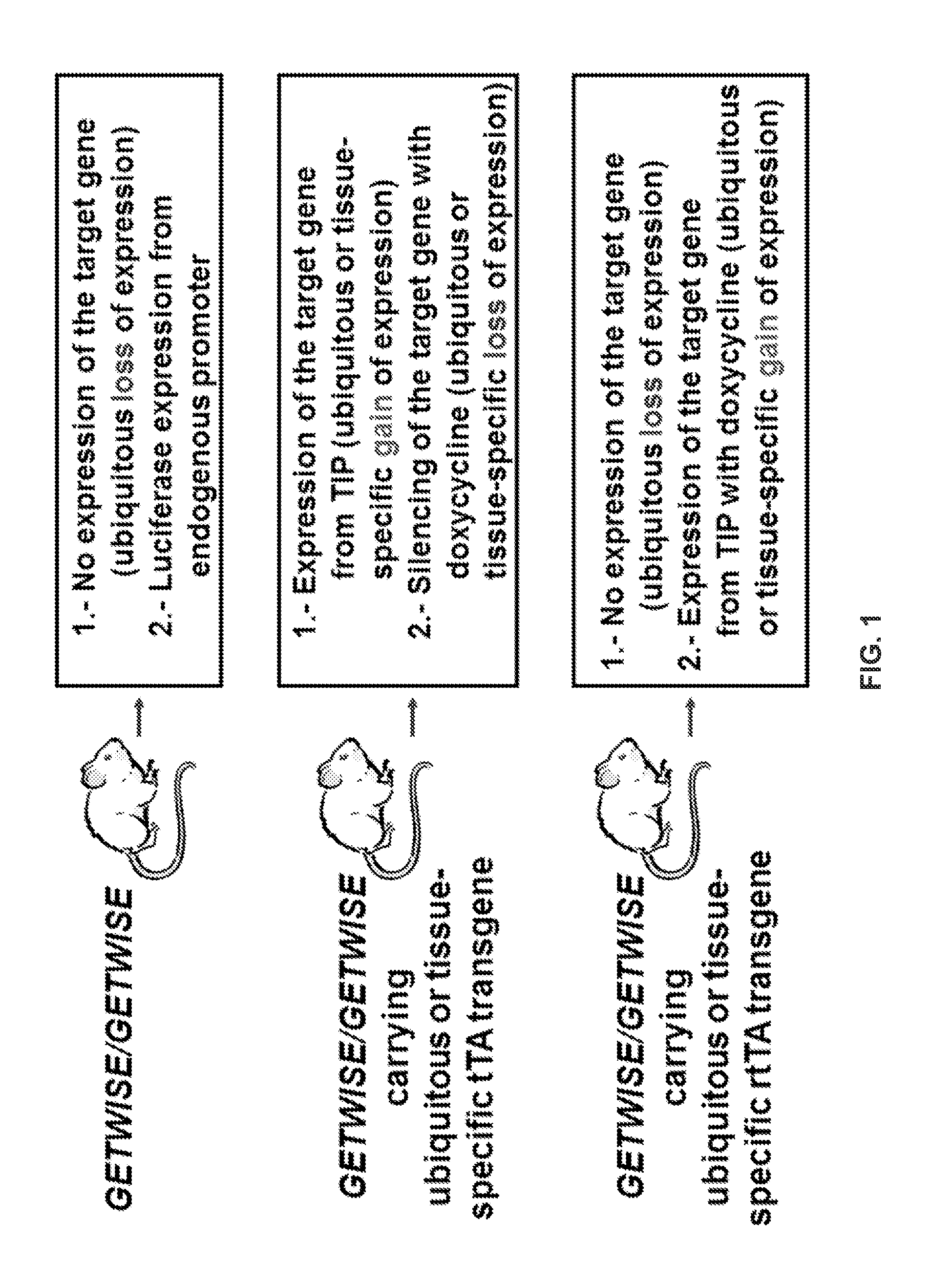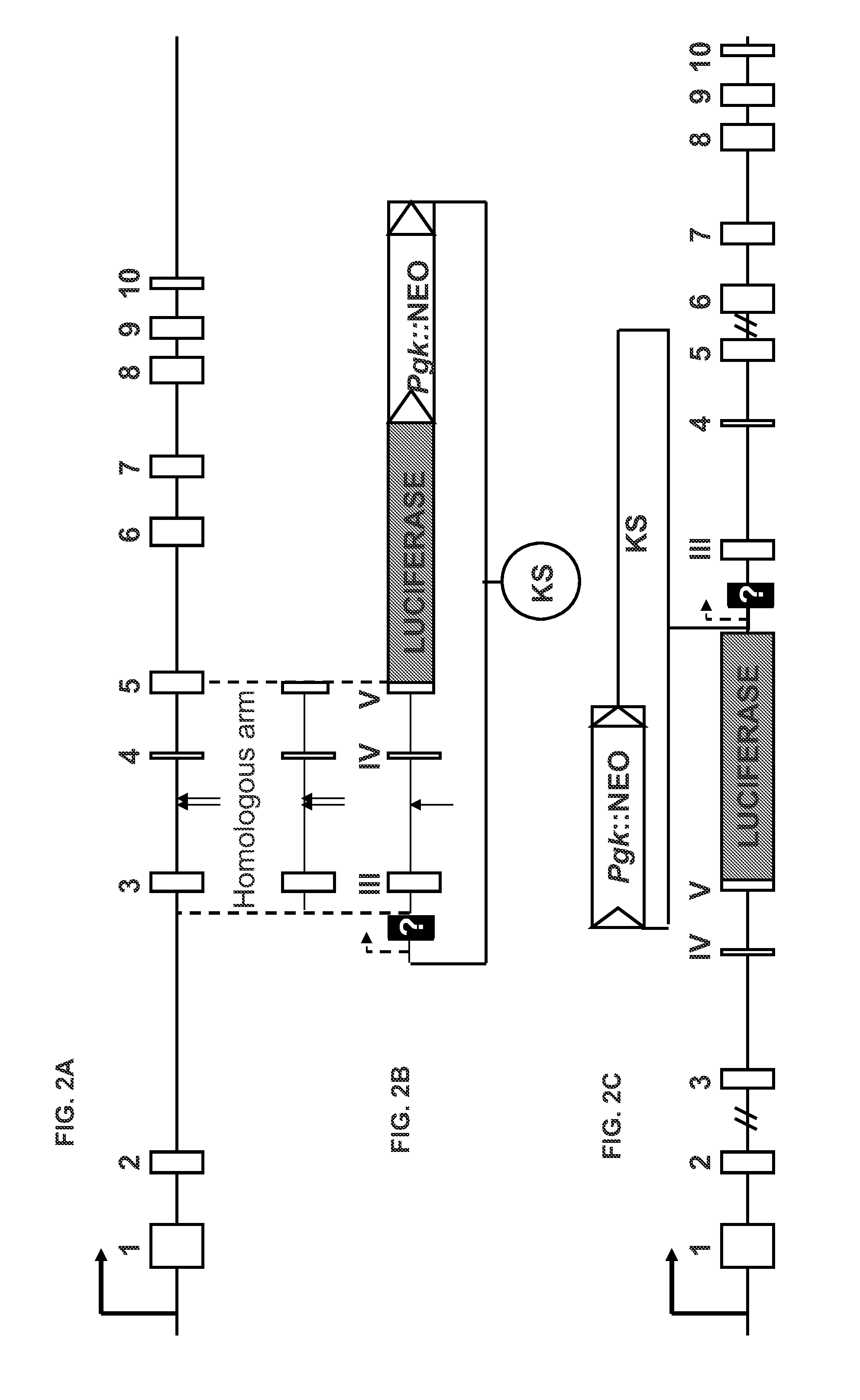Methods and Vectors for Gene Targeting With Inducible Specific Expression
a gene targeting and specific expression technology, applied in the field of gene targeting techniques, can solve the problems of ubiquitous loss of gene expression in transgenic getwise animals, and achieve the effects of speeding up screening, facilitating fast and effective cloning and identification, and reducing the risk of infection
- Summary
- Abstract
- Description
- Claims
- Application Information
AI Technical Summary
Benefits of technology
Problems solved by technology
Method used
Image
Examples
example 1
Targeting Ppp1r16b (Timap) Gene
[0143]This gene encodes a novel regulatory sub-unit of protein phosphatase 1. In mouse, targeted deletion of Timap was not associated with gross anatomical abnormalities (Heinzel, et al., Eur J Immunol,37:2562-2571 (2007)); however, in vitro and in vivo data showed that TIMAP is involved in the regulation of endothelial barrier function (Csortos, et al., Am J Physiol Lung Cell Mol Physiol, 295:L440-450 (2008); Poirier, et al., Respir Physiol Neurobiol, 179:334-337 (2011)). Therefore, the ability to manipulate TIMAP expression in endothelium provides valuable information about the role of TIMAP in vascular barrier regulation. Mouse Timap (FIG. 3A) is an example of a gene a) with no coding sequence upstream the homologous region; b) containing sites for gap creation. To create homologous region, a single 4,518 by genomic fragment, consisting of 4,428 by of intron #2 and 90 by of 5′utr from exon #3 (FIG. 3B) was amplified. Deletion of an internal 206 by A...
example 2
Targeting Smpd3 Gene
[0145]This gene encodes neutral sphingomyelinase 2 (nSMase2), enzyme converting sphingomyelin to ceramide. It has been shown that a deletion in mouse Smpd3 gene resulted in skeletal dysplasia (Aubin, et al., Nat Genet, 37:803-805 (2005); Khavandgar, et al., J Cell Biol, 194:277-289 (2011)). On the other hand, data of literature showed that over-expression of nSMase2 contributes to the pathogenesis of emphysema (Filosto, et al., Am J Respir Cell Mol Biol, 44:350-360 (2011)). Therefore, the ability to manipulate nSMase2 expression in skeletal cell lineages and pulmonary epithelium provides valuable information about the role of nSMase2 in skeletal development and lung function. Mouse Smpd3 (FIG. 5A) is an example of a gene a) with no coding sequence upstream the homologous region; b) no possibility for gap creation.
[0146]To create the homologous region, a single 4,108 bp genomic fragment, consisting of 4,018 bp of intron #2 and 90 bp of 5′utr from exon #3 was ampli...
example 3
Targeting Ppp1r12a (Mypt1) Gene
[0147]This gene encodes another regulatory sub-unit of protein phosphatase 1. Targeted deletion of mouse Mypt1 gene resulted in early embryonic lethality of homozygous mutant embryos (Okamoto, et al., Transgenic Res, 14:337-340 (2005)). In vitro data show that MYPT1 plays critical roles in vital functions such as cell division (Totsukawa, et al., J Cell Biol, 144:735-744 (1999)) and cell migration (Xia, et al., Exp Cell Res, 304:506-517 (2005)). Therefore, the ability to silence MYPT1 expression later in the development, as well as the ability to manipulate MYPT1 expression in the tissue of choice provides valuable information about the role of MYPT1 in development, physiology, and pathology. Mouse Ppp1r12a is an example of a gene a) with coding sequence upstream the homologous region; b) containing sites for gap creation (FIGS. 7A and 7B). Several MYPT1 isoforms are generated by alternative splicing (Dirksen et al. 2003; Dirksen et al. 2000). Human co...
PUM
| Property | Measurement | Unit |
|---|---|---|
| volume | aaaaa | aaaaa |
| volume | aaaaa | aaaaa |
| nucleic acid | aaaaa | aaaaa |
Abstract
Description
Claims
Application Information
 Login to View More
Login to View More - R&D
- Intellectual Property
- Life Sciences
- Materials
- Tech Scout
- Unparalleled Data Quality
- Higher Quality Content
- 60% Fewer Hallucinations
Browse by: Latest US Patents, China's latest patents, Technical Efficacy Thesaurus, Application Domain, Technology Topic, Popular Technical Reports.
© 2025 PatSnap. All rights reserved.Legal|Privacy policy|Modern Slavery Act Transparency Statement|Sitemap|About US| Contact US: help@patsnap.com



